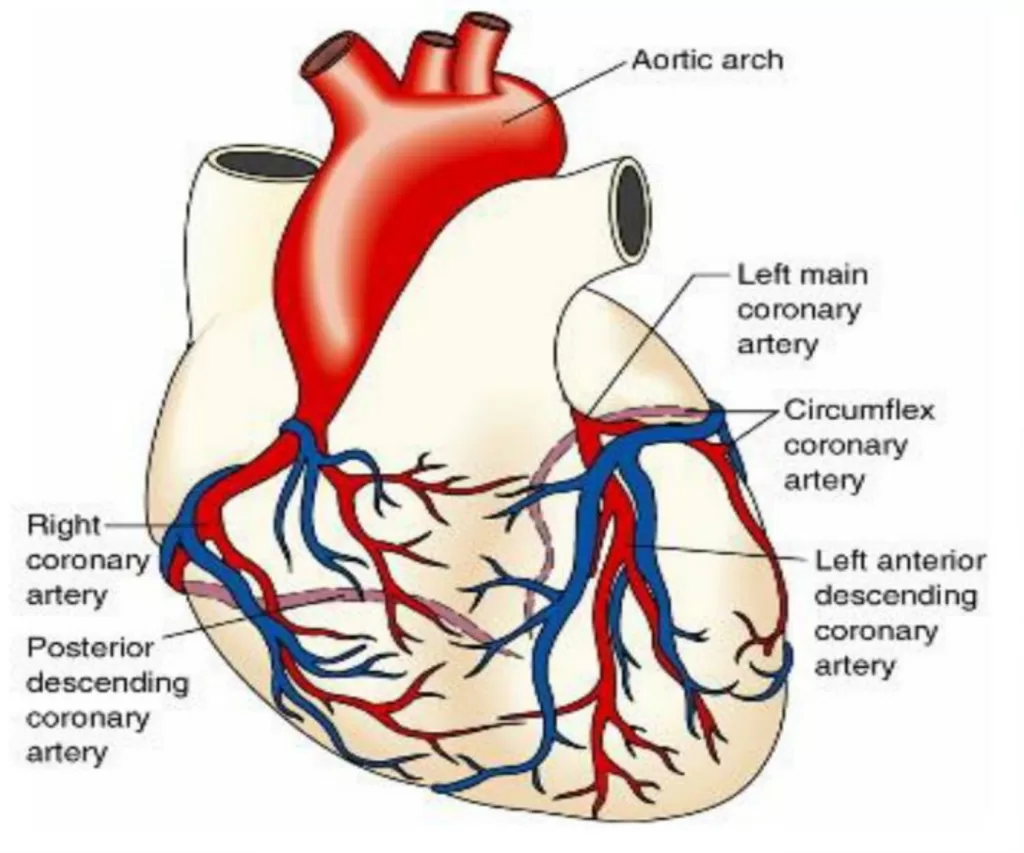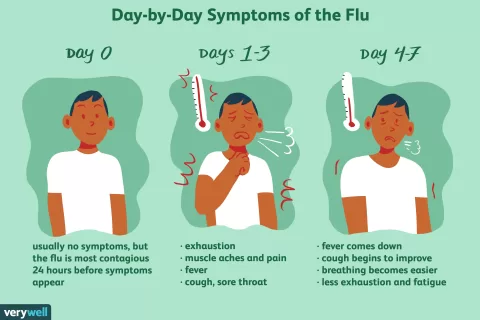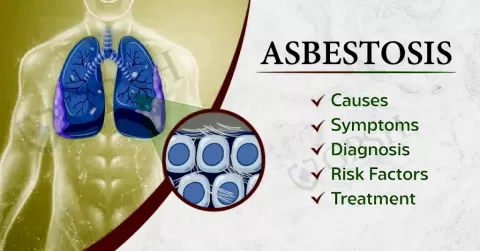A “widowmaker” heart attack is one of the most lethal forms of heart attack, often striking without warning and leading to devastating consequences. This serious condition occurs when a major artery that supplies blood to the heart becomes blocked, disrupting vital blood flow. In a recent viral TikTok video, an Arizona couple bravely shared their harrowing experience with this type of heart attack, aiming to raise awareness on heart health and potential heart attack symptoms. As their footage reveals, recognizing widowmaker symptoms can be challenging, often mistaken for less serious ailments. As we delve into their story and the importance of heart health awareness, we can learn how to advocate for our well-being and potentially save lives.
Described by medical professionals as a life-threatening blockage, a widowmaker heart attack is a critical cardiovascular event that demands immediate attention. This term refers to the abrupt interruption of blood supply due to an obstruction in the heart’s main artery, which can lead to severe damage or even death. Recent media coverage, including alarming instances like the Arizona couple’s surveillance video heart attack, sheds light on this urgent issue. Effective solutions include education on heart attack symptoms, as many individuals may misinterpret them as minor health concerns. By strengthening our knowledge about these dangerous conditions, we can empower ourselves and others to recognize early signs and seek timely medical intervention.
Understanding Widowmaker Heart Attacks: The Silent Killer
A widowmaker heart attack is a critical medical emergency that occurs when there is a blockage in the left anterior descending artery, which is responsible for supplying the heart with oxygen-rich blood. This type of heart attack is particularly dangerous because if it goes untreated, it can lead to sudden cardiac arrest or death within minutes. The symptoms associated with widowmaker heart attacks can often be subtle and may include feelings of nausea, chest pain, and general malaise, which can easily be mistaken for less serious conditions. This makes awareness and recognition of the signs crucial for timely intervention.
In the case of Jeff Goss, the warning signs of his widowmaker heart attack were alarmingly vague. Initial symptoms included nausea and a clammy sensation, which he did not immediately associate with a life-threatening event. The footage shared by the Gosses serves as a powerful reminder of how critical it is to understand heart attack symptoms, especially the widowmaker variety. Being informed about these signs can empower individuals to seek help promptly, potentially saving lives.
Recognizing Heart Attack Symptoms: What to Look For?
Heart attack symptoms can vary between individuals and may not always present as dramatic physical distress. Many people assume it involves severe chest pain, but for some, it can manifest as discomfort radiating to the arms, back, jaw, or even shortness of breath. Symptoms can also include gastrointestinal distress, such as feeling nauseous or light-headed, which was shown in Jeff Goss’s experience. It’s essential for individuals to be aware of these early warning signs in order to act quickly and decisively.
In addition to the common symptoms, individuals should also monitor for less typical signs such as cold sweats or feelings of impending doom. According to medical professionals, knowing these can make a significant difference in response time, which is crucial during a heart attack. A faster response increases the chances of preserving heart tissue from damage and ultimately improves recovery outcomes.
The Importance of Heart Health Awareness and Quick Action
Heart health awareness is vital for preventing heart attacks and ensuring that individuals recognize the seriousness of conditions like the widowmaker heart attack. Education about risk factors such as high blood pressure, cholesterol levels, and lifestyle choices can play a significant role in reducing incidence rates. The experience of the Gosses underlines the need for public awareness campaigns that can further educate people about recognizing heart attack symptoms and seeking help promptly.
The ADA has recorded that public awareness can lead to faster responses to heart attack symptoms, encouraging people to act quickly. In the case of Jeff Goss, had he delayed even a few minutes longer before calling for help, the outcome could have been tragic. The distressing nature of heart attacks emphasizes the necessity for everyone to cultivate an understanding of their heart health, engage in regular check-ups, and foster healthy lifestyle choices.
Video Footage: A Powerful Tool for Awareness
The Goss couple’s decision to share their experience through home surveillance video has sparked conversations around heart health awareness. By showing the raw reality of how a widowmaker heart attack can occur, they aim to break down the stigma around discussing heart attacks openly. Visibility through social media platforms like TikTok can broaden the audience reach, helping to inform millions of viewers about the risks of heart attacks.
In addition to personal anecdotes, social sharing engages communities and encourages individuals to share their stories about heart health awareness. This can help demystify heart attack symptoms, promote vigilance, and ultimately lead to saved lives. In a healthcare environment where immediate action often dictates the outcomes of heart conditions, continued dialogue initiated by real-life experiences like the Goss’s can inspire individuals to prioritize their heart health and that of their loved ones.
The Role of Emergency Response in Heart Attack Situations
When witnessing heart attack symptoms, such as those demonstrated by Jeff Goss, understanding the importance of emergency response is essential. The moments after a person begins to show signs of a heart attack are crucial; immediacy can greatly affect survival and recovery chances. The Gosses’ story emphasizes that calling emergency services should be the first reaction, even if the individual may not believe they are experiencing a severe issue. Delaying this action can lead to dire consequences.
It’s also important to note that emergency responders are trained to assess and treat potential heart attacks quickly. They can conduct essential procedures like ECGs and administer medications that can help stabilize the patient before they reach the hospital. In scenarios similar to the Goss’s experience, swift actions from the first responders can mean the difference between life and death.
Public Health Recommendations for Heart Attack Response
Given the risks associated with heart attacks, public health authorities recommend that all individuals familiarize themselves with heart attack symptoms and the recommended actions to take. This includes not only being aware of signs to look out for but also knowing how to perform CPR or use an automated external defibrillator (AED) in case of cardiac arrest.
Community programs that educate citizens on these topics can empower more individuals to feel confident in responding to heart emergencies. The Gosses’ story underlines the urgency of such initiatives; proactive community engagement can cultivate a culture where individuals prioritize recognizing and responding to heart attack symptoms, ultimately leading to enhanced survival rates for all.
Heart Attack Recovery: What to Expect After a Widowmaker
Recovering from a widowmaker heart attack is a multi-faceted journey. Individuals like Jeff Goss often face physical challenges, including fatigue and changes in exercise tolerance, requiring them to adapt their daily routines significantly. Additionally, the emotional impact of surviving such a life-threatening event can lead to feelings of anxiety or depression as patients navigate their new reality after a heart attack.
Medical guidance is crucial in this recovery stage. Healthcare providers typically recommend a rehabilitation program that combines supervised exercise with education on heart-healthy living. This can include dietary adjustments, smoking cessation, and understanding the importance of regular health screenings. These elements are essential for empowering survivors to take control of their heart health moving forward.
Ongoing Support Systems for Heart Patients
The emotional and psychological effects of surviving a widowmaker heart attack can be profound. Support groups and counseling may provide vital assistance, offering survivors a platform to express their feelings and experiences. Connecting with others who have gone through similar situations can also foster a sense of community and hope.
The Gosses’ experience highlights the importance of a strong support system during recovery. Family, friends, and healthcare professionals can play supportive roles, ensuring that the individual feels connected and understood as they navigate their recovery journey. Championing heart health awareness and sharing stories of resilience can motivate others to prioritize their well-being in face of heart-related challenges.
Navigating the Emotional Impact of Heart Attacks
Experiencing or witnessing a heart attack can leave an emotional toll on individuals and their loved ones. For the Goss family, the distressing moments captured on surveillance video not only showcase the physical symptoms of a widowmaker heart attack but also illustrate the psychological impacts that accompany such an event. Survivors often report experiencing anxiety about their health and fear of recurrence, which can affect their quality of life.
Mental health care is just as essential as physical recovery after a heart attack. It’s important for survivors and their families to acknowledge these feelings and seek support when needed. Therapy, support groups, and communication with healthcare professionals about the emotional aspects of recovery can offer valuable resources for navigating the aftermath.
Raising Awareness Through Personal Stories
Personal accounts like that of Jeff and Michelle Goss play a pivotal role in promoting heart health awareness. By sharing their story and the reality of a widowmaker heart attack, they help demystify the condition and encourage discussions about heart health. Personal narratives can be powerful tools in education, empowering others to understand not just the symptoms but also the personal journeys involved in recovery.
Education based on real-life experiences can promote empathy and inspire individuals to prioritize their heart health. As more people share their stories, it fosters a culture of openness around what heart attacks entail, which can motivate others to recognize and respond to symptoms earlier, potentially saving more lives.
Preventative Measures for Heart Health
Preventative healthcare measures are fundamental to heart health and can significantly lower the risk of experiencing a heart attack, including widowmaker varieties. Regular exercise, a balanced diet, and routine medical check-ups are integral components of a heart-healthy lifestyle. Engaging in activities that strengthen cardiovascular health not only helps mitigate risks but also promotes overall wellness.
Moreover, understanding personal risk factors such as family history, diabetes, and high cholesterol is crucial. Individuals should work with healthcare providers to monitor these factors and adjust their lifestyles accordingly. Prevention is always better than cure, and making proactive choices can greatly reduce the likelihood of heart attacks.
Community Initiatives Promoting Heart Health Awareness
Various local and national initiatives focus on heart health awareness and preventive care. Programs aimed at educating communities about the signs and symptoms of heart attacks can have a profound effect on public health outcomes. By highlighting the details captured in stories like the Gosses’, these initiatives hope to inform others about what to watch for, ultimately leading to quicker responses when symptoms present.
Through support from healthcare professionals and community organizations, awareness campaigns can create lasting impacts on heart disease statistics. As more individuals participate in heart health programs and educational workshops, greater opportunities arise for collective improvement in heart health outcomes across populations.
Frequently Asked Questions
What are the symptoms of a widowmaker heart attack?
The symptoms of a widowmaker heart attack can be subtle and similar to other conditions. Key signs include chest discomfort, nausea, a cold sweat, shortness of breath, and pain that may radiate to the jaw, shoulder, or back. If you or someone you know experiences these symptoms, especially in combination, it’s crucial to seek medical help immediately.
How does a widowmaker heart attack differ from other heart attack symptoms?
A widowmaker heart attack refers specifically to a blockage in the left anterior descending artery, which supplies blood to a significant portion of the heart. While general heart attack symptoms may include chest pain and shortness of breath, widowmaker symptoms can also involve severe nausea and a gray complexion, as seen in the case of Jeff Goss from Arizona, who experienced these exact symptoms shortly before his heart attack.
What should I do if I suspect a widowmaker heart attack?
If you suspect a widowmaker heart attack, do not wait. Call emergency services immediately. Time is critical; early intervention can save lives. It’s essential to recognize heart attack symptoms such as chest pain, nausea, and cold sweats, and to act quickly to ensure that medical assistance is on the way.
Can surveillance video of a widowmaker heart attack help raise awareness?
Yes, surveillance video of a widowmaker heart attack can significantly raise awareness by visually demonstrating the signs and urgency of a heart attack. The viral video shared by the Arizona couple highlights how quickly symptoms can escalate, encouraging viewers to recognize heart attack symptoms and react promptly.
Why is heart health awareness important regarding widowmaker heart attacks?
Heart health awareness is crucial because widowmaker heart attacks are often fatal and can occur suddenly without significant prior symptoms. Understanding the importance of recognizing warning signs—like chest discomfort and nausea—can lead to earlier medical intervention, which is vital for survival.
What role did the Arizona couple play in promoting awareness of widowmaker heart attacks?
The Arizona couple, Michelle and Jeff Goss, played a pivotal role in promoting awareness of widowmaker heart attacks by sharing their personal experience through surveillance footage. Their story brings attention to the subtle symptoms that can precede a heart attack, emphasizing the need for immediate action and communication during such emergencies.
How can I prepare for a potential heart attack given the risks of a widowmaker heart attack?
To prepare for a potential heart attack, especially a widowmaker, familiarize yourself with heart attack symptoms, maintain a healthy lifestyle, and manage risk factors such as hypertension and high cholesterol. Additionally, ensure you have an emergency plan in place and encourage loved ones to do the same, as recognizing and responding to the signs quickly can save lives.
What is the importance of acting quickly during a suspected widowmaker heart attack?
Acting quickly during a suspected widowmaker heart attack is crucial because delaying medical intervention can lead to irreversible damage to the heart. Heart cells can die rapidly, and timely treatment may mean the difference between survival and fatality. Awareness of the symptoms and a prompt response are vital.
| Key Points | Details |
|---|---|
| What’s a Widowmaker Heart Attack? | One of the deadliest types of heart attacks, where a major artery supplying blood to the heart gets blocked. |
| Incident Overview | An Arizona couple shared home surveillance footage depicting Jeff experiencing a widowmaker heart attack before heading to a football game. |
| Symptoms Observed | Jeff felt nauseous, experienced chest pain, and appeared clammy; he initially underestimated the severity of his symptoms. |
| Critical Response | Doctors noted that had Jeff waited just 10 more minutes for treatment, he may not have survived. |
| Awareness Message | The Gosses aim to raise awareness about heart attack signs and the importance of seeking immediate medical help. |
Summary
A widowmaker heart attack is one of the most dangerous forms of heart attack that can lead to fatal consequences if not addressed quickly. The experience shared by Michelle and Jeff Goss underscores the importance of recognizing the subtle symptoms of a heart attack, such as nausea, chest discomfort, and cold sweats. Responding promptly to these signs can be life-saving, as demonstrated by Jeff’s near-miss situation. Their story serves as a vital reminder that immediate action can prevent tragic outcomes in cases of heart attacks, especially regarding widowmaker attacks.
The content provided on this blog (e.g., symptom descriptions, health tips, or general advice) is for informational purposes only and is not a substitute for professional medical advice, diagnosis, or treatment. Always seek the guidance of your physician or other qualified healthcare provider with any questions you may have regarding a medical condition. Never disregard professional medical advice or delay seeking it because of something you have read on this website. If you believe you may have a medical emergency, call your doctor or emergency services immediately. Reliance on any information provided by this blog is solely at your own risk.








